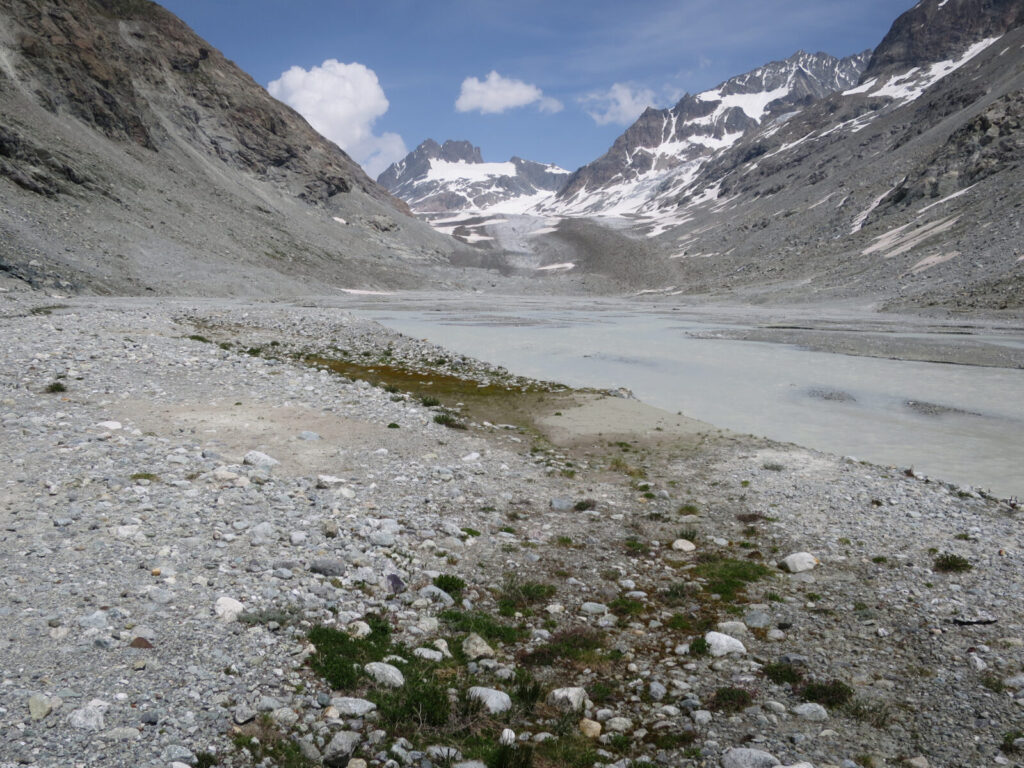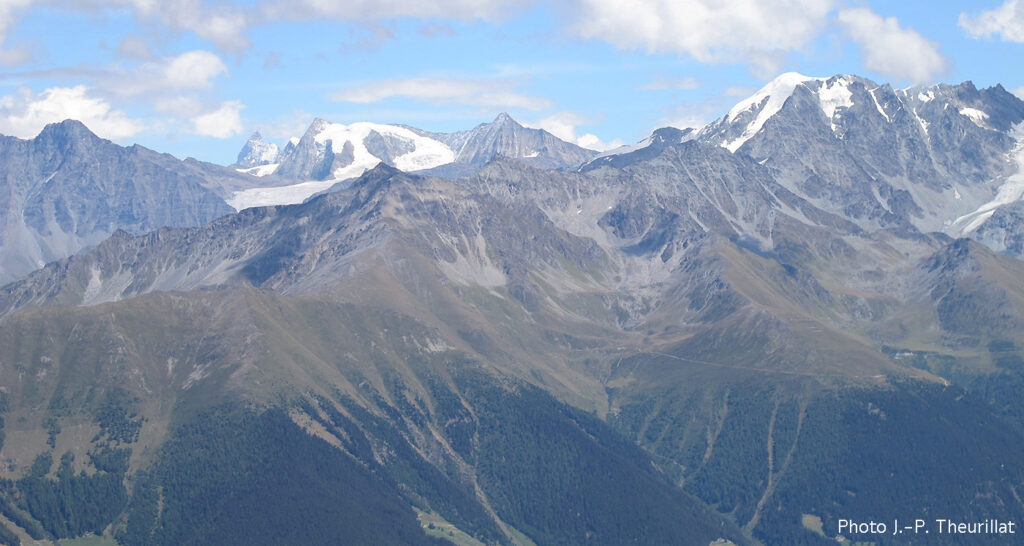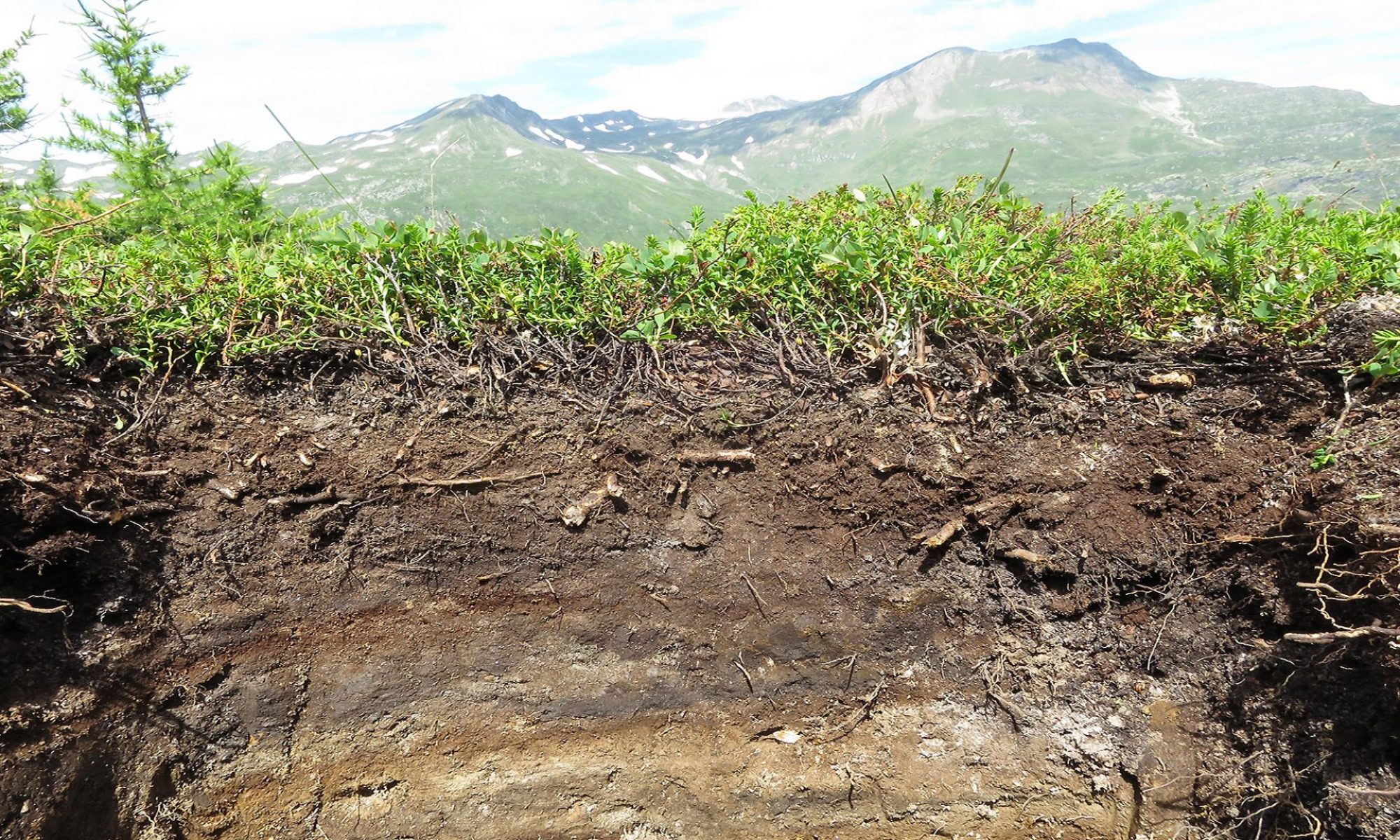Plant ecology in the alpine belt
Climatic conditions in the alpine belt are strongly constraining plant growth. Hence, the large areas in the Alps above the treeline offer some interesting topics to plant ecology.
With the glaciers receding under climate change, large areas of moraine material are available for plant colonisation. Plant succession is studied since long, but mainly in relation to the time since glacier retreat. But time is not the only factor influencing colonisation because plants need water, which is not similarly available on glacier forefields. In a master project, 100 plots, liberated from the Otemma glacier in short time, were inventoried with precise description of the substrate and distance to water. The results clearly showed that colonisation is quicker (higher plant cover and higher species richness) on fine sediments and when groundwater is close to the surface.

In the Alps, the treeline was often studied and the limiting conditions for trees in the alpine belt are now quite well understood. Because of the soil warming under strong solar radiations, grasses and herbs can grow above the treeline. However, the conditions corresponding to the upper limit of grasslands, here called grassline, were less considered. On the basis of temperature monitoring in the GLORIA project, we assessed the climatic conditions at the grassline in Europe. We found that closed grasslands are present in sites where the mean growing season soil temperature is warmer than 4.9 °C, and the growing season length above 85 days. These values are quite similar to those observed at the treeline, in accordance with physiological thresholds for plant growth.

Publications
Bürli S., Theurillat J.-P., Winkler M., Lamprecht A., Pauli H., Rixen C., … & Vittoz P. (2021). A common soil temperature threshold for the upper limit of alpine grasslands in European mountains. Alpine Botany 131: 41-52.
Siegfried L., Vittoz P. & Lane S. (2023). Hydrological heterogeneity and the plant colonization of recently deglaciated terrain. Arctic Antarctic and Alpine Research 55: 2259677.
Mayo de la Iglesia R., Miserere L., Vust M., Theurillat J.-P., Randin C. & Vittoz, P. (2024). Divergent responses of alpine bryophytes and lichens to climate change in the Swiss Alps. Journal of Vegetation Science 35: e13292.

